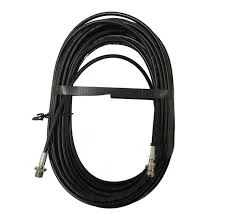how to replace the high pressure power steering hose
How to Replace the High-Pressure Power Steering Hose
Power steering is an essential feature in modern vehicles that enhances maneuverability and provides a smoother driving experience. The high-pressure power steering hose is a critical component of the power steering system, responsible for transporting hydraulic fluid from the power steering pump to the steering gear or rack. Over time, the high-pressure hose can become brittle, wear out, or develop leaks, leading to power steering failure. Replacing the high-pressure power steering hose is a task that can be accomplished at home with the right tools and a bit of mechanical knowledge. Here’s a step-by-step guide to help you through the process.
Tools and Materials Needed
Before you begin, gather the following tools and materials
- New high-pressure power steering hose (specific to your vehicle model) - Power steering fluid - Socket set and ratchet - Wrench set - Screwdrivers - Hose clamps (if necessary) - Pliers - Drain pan - Safety goggles and gloves - Shop towels
Step 1 Safety First
Safety is paramount when working on any vehicle. Ensure that the car is parked on a level surface, the engine is off, and the keys are removed from the ignition. Wear safety goggles and gloves to protect your eyes and hands from any fluid spills.
Step 2 Locate the High-Pressure Hose
Open the hood and locate the power steering reservoir. Follow the lines from the reservoir to find the high-pressure hose. Usually, it is the thicker rubber hose that connects the power steering pump to the steering gear or rack.
Step 3 Prepare to Drain the Fluid
Place a drain pan under the power steering system to catch any fluid that may leak during the replacement. It’s advisable to have new power steering fluid on hand to refill the system after the replacement.
Step 4 Disconnect the Hose
Using the appropriate wrench or socket, carefully loosen and remove the fittings on both ends of the high-pressure hose. Take your time to avoid damaging any surrounding components. If the hose is stuck, a gentle twist or some penetrating oil can help. Be prepared for some fluid to spill when you disconnect the hose.
how to replace the high pressure power steering hose

Step 5 Remove the Old Hose
Once the fittings are disconnected, carefully remove the old high-pressure hose from the vehicle. Inspect the old hose for signs of wear, cracking, or damage to better understand the issues that led to the replacement.
Step 6 Install the New Hose
Take the new high-pressure power steering hose and position it where the old hose was removed. Ensure that it’s routed correctly and securely positioned to avoid interference with other components. Tighten the fittings on both ends of the new hose using a wrench, ensuring they are snug but not overtightened to prevent damage.
Step 7 Refill the Power Steering Fluid
Before starting the engine, refill the power steering reservoir with new power steering fluid. It is essential to use the correct type of fluid as specified in your vehicle’s owner manual.
Step 8 Check for Leaks
Start the engine and turn the steering wheel from lock to lock to circulate the fluid through the system. Watch for any signs of leaks around the new hose connections. If you notice any leaks, turn off the engine and check that the fittings are tight.
Step 9 Clean Up
Once you’re sure there are no leaks, remove the drain pan and dispose of any old fluid responsibly. Clean any spills with shop towels.
Conclusion
Replacing the high-pressure power steering hose is a manageable task for anyone with basic mechanical skills. By following the steps outlined above, you can save time and money and ensure your power steering system functions properly. Always consult your vehicle’s service manual for specific instructions related to your make and model, and don’t hesitate to seek professional assistance if you run into difficulties. With care and attention, you can maintain your vehicle’s power steering performance for a smoother, safer driving experience.
-
Ultimate Spiral Protection for Hoses & CablesNewsJun.26,2025
-
The Ultimate Quick-Connect Solutions for Every NeedNewsJun.26,2025
-
SAE J1401 Brake Hose: Reliable Choice for Safe BrakingNewsJun.26,2025
-
Reliable J2064 A/C Hoses for Real-World Cooling NeedsNewsJun.26,2025
-
Heavy-Duty Sewer Jetting Hoses Built to LastNewsJun.26,2025
-
Fix Power Steering Tube Leaks Fast – Durable & Affordable SolutionNewsJun.26,2025

